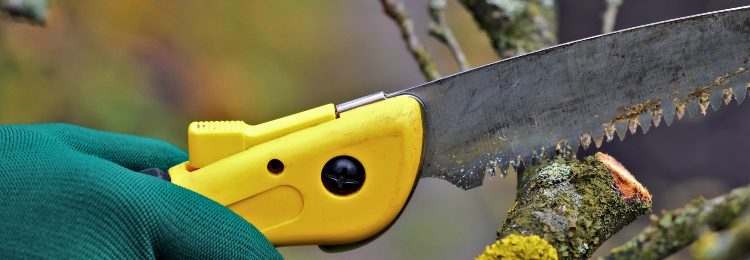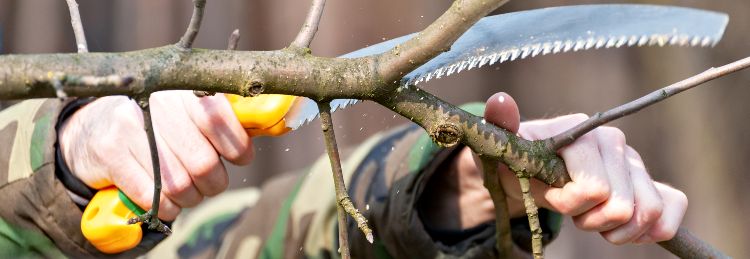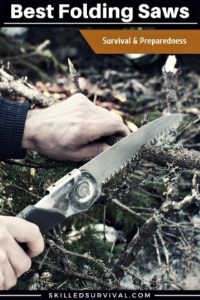
A Complete Guide To Finding & Using A Folding Saw
Because I believe there are five cutting tools EVERYONE should own:
- Survival Knife
- Survival Hatchet
- Survival Machete
- Survival Axe
- Folding Saw
Many people ONLY focus on knives and hatchets (perhaps because they’re weapons and tools).
But they’re limiting themselves by ignoring the cutting power of the saw.
It’s a simple, lightweight tool that pays for itself in camp and at home.
TOPICS IN THIS GUIDE… ↓(click to jump)
- Best Folding Saws Today
- What’s A Folding Saw?
- Why You Should Invest In One
- Best Folding Saw Features
- Sharpening A Serrated Saw
Best Folding Saws On The Market Today
My wife is a city arborist who prunes dozens of trees daily in city parks and streets - and she swears by her Corona Saws.
The Corona RazorTOOTH is a large pruning saw with pyramidal teeth that cut on both strokes.
It's a very comfortable saw with good reach and an ergonomic handle.
The blade locks in both open and closed positions, making it safer for both use and transport.
The blade is chrome plated and hardened but does need cleaning and a light coat of oil to prevent corrosion.
A 10" blade is perfect for limbs up to about 6"; for anything bigger, you should consider a chainsaw instead.
The Corona Saw is efficient, reliable, and safe.
Why? Because its primary clients are pro arborists - folks who use pruning saws daily.
PROS
- High-quality materials and build.
- Replaceable blades are available.
- Ergonomic handle for comfort.
- Clean, efficient cuts
CONS
- Thinner blades may bend if used improperly.
↓ Corona 10 Inch Saw Vs Baho Vs Silky
Another high-quality pruning saw is the Bahco 396-JT.
It's a favorite of my mountain bike trail-builders group.
That's because it's lightweight and compact.
And it stands up to harsh mountain trail use and abuse.
It also stands up to the abuse of pruning roots and branches.
But it can build wooden cribbing to hold back switchbacks.
And it can take a beating from rambling about in a backpack all day with other tools.
The non-stick blade coating helps with the ever-present sticky sap and dirt.
Plus, the replaceable blades are easy to swap.
And necessary when someone accidentally bends one in the field - or drags the teeth across a hidden rock.
PROS
- Solid blade lock in both open and closed positions
- Easy blade replacement
- Low friction and sap-resistant blade coating
CONS
- Smaller blade length limits limb size
- Dark color hard to find if dropped in brush
↓ Bahco Laplander Saw: Must Have!
Silky is another highly-regarded saw brand.
Arborists and professionals agree that the BIGBOY 2000 lives up to the name!
It features a monster 14.2" blade for the biggest pruning jobs.
It isn't overly curved, making it efficient for cutting up to 8-9" limbs and small trunks.
The blade is replaceable and comes in 4 styles, denoted by handle color.
But they're all interchangeable.
So you can either mix and match blades on one handle.
Or keep with the color coding to make it easy to identify which saw you're grabbing.
Finally, it's incredibly lightweight for the size, at just over 1 lb!
PROS
- Durable, high-quality build
- Well-balanced feel in the hand
- Extremely lightweight. Longer blade than most similar saws
CONS
- 16" closed length can be harder to pack.
- Expensive
↓ Silky BigBoy 2000: Super Saw Review
The Felco F600 is my favorite small saw for overhead work due to its low weight, grippy handle, and compact size.
The 6.3" version of the saw is perfect for pruning fruit trees and other yard work.
It also helps in deer camps when you must prune out some shot trails.
It's quick and productive without much fuss.
The blade and tooth shape release sawdust easily to make easy sawing.
PROS
- Very lightweight
- Non-slip handle design
CONS
- The small design might not fit large hands
↓ Lightweight Hiking | Camping Saw – Felco 600 Review
Fiskars is a common name in all kinds of cutting tools – I grew up using their orange-handled scissors and hatchets.
The 7″ PowerTooth pruning saw is another excellent tool.
It’s lightweight and has a solid non-slip grip to support the locking blade.
The hardened blade has triple-ground teeth (three cutting surfaces per tooth). This design makes for quick work of small to medium limbs and firewood.
Unfortunately, a sharpening saw isn’t available for the tooth profile. So it may be difficult (or nearly impossible) for a beginner to sharpen at home.
Lastly, the plastic handle can be a weak point, so be sure to use the tool appropriately to avoid breakage.
PROS
- Very lightweight
- Fast cutting
CONS
- The handle is weak and prone to breaking
- Narrow kerf causes binding
↓ Fiskars Saw – Bang For Your Buck?
The Gerber Freescape Camp Saw is not a traditional saw - it's a folding bow saw.
This compact, lightweight saw folds flat without removing parts and accepts a standard 12" saw blade.
Plus, it comes with a rubber over-mold grip that prevents accidental slips.
PROS
- Interchangeable blades
- Folds down compact for backpacking trips
- Lightweight
CONS
- Due to the design, you cannot cut thicker logs
↓ Gerber Freescape Folding Bow Saw Review
Most folder saws on the market are for landscapers and arborists.
But plenty of people are looking for a saw to use on backcountry hunting and fishing trips.
Primos Gear is a well-known brand of hunting gear with an excellent reputation.
This compact saw features offset triangular teeth with an aggressive set.
These triangular teeth allow it to cut quickly and efficiently through camp chores and firewood.
The push-button lock keeps the blade secure.
And the dark colors help keep you camouflaged while you hunt.
Be sure to get a matching file to sharpen the blade and tune it up before you take it out the first time.
PROS
- Compact design
- Muted colors
- Carrying case included
CONS
- Not sharp out of the box
↓ Primos Survival Saw Review
There are plenty of saws shaped like oversized pocket knives.
Instead, the Coghlan is a collapsible bow saw!
Bow saws are great for cutting firewood.
They're far less prone to breakage during binding than other saws.
That's because the blade is under tension instead of compression.
The Coghlan is lightweight, easy to handle, and can cut much larger logs than any other traditional folder.
The only drawback is that you can't sharpen the blades at home, but they ARE very cheap to replace outright.
You can use almost ANY 21" bow saw blade with the Coghlan.
This feature means you can swap for a fresh blade or adapt it to your cutting needs.
PROS
- Super lightweight
- Easy to replace blades
- Handle carries multiple replacement blades
CONS
- Blades are a challenge to sharpen
↓ Budget Bushcraft & Camping Saw Review
The Silky KATANABOY doesn't fit the general model of "a saw you can pack in your pocket."
But it's still worth mentioning.
Why? Because maybe YOU'RE looking for the BIGGEST folding saw you've ever seen.
It's a two-handed saw with a 19.7" blade and incredible reach!
Rather than a belt sheath, it comes with a shoulder bag!
If you're looking for a big saw for areas where you can't use a chainsaw, this is your choice.
PROS
- Huge reach
- Exceptional quality materials and build
- Able to cut large branches
CONS
- Big and bulky to carry
- Expensive
↓ Survival Saw Shootout – Katanaboy Vs. Bucksaw
What’s A Folding Saw Anyway?
It’s as simple as it sounds.
It’s a portable saw with a blade that folds up when not in use for safety, ease of transport, and to protect the saw teeth.
While the basic idea is simple, many different designs exist.
The most common is a saw with a blade that folds back into the handle like a giant folding pocketknife.
This design is easy to produce, reliable, and simple to use.
It also adapts to large and small saw sizes and shapes.
But, there are many different variations to the basic design.
There are ones aimed at everything from general use to specific situations.
For example:
- There are super lightweight backpacking models focused on weight reduction.
- Or there are fine-toothed pruning saws perfect for clean cuts on live trees.
- Or how about aggressive survival saws that make large-diameter cuts to rip through firewood like butter?
The bottom line is:
There’s a saw for nearly every use.
Heck, some saws even feature interchangeable blades with different tooth patterns.
These interchangeable blades allow you to adapt to the situation at hand.
And yes, there are even ice saws just for cutting snowblocks.
Sure, it would be terrible to cut wood.
But it makes for quick work for avalanche danger testing and snow shelter builds!
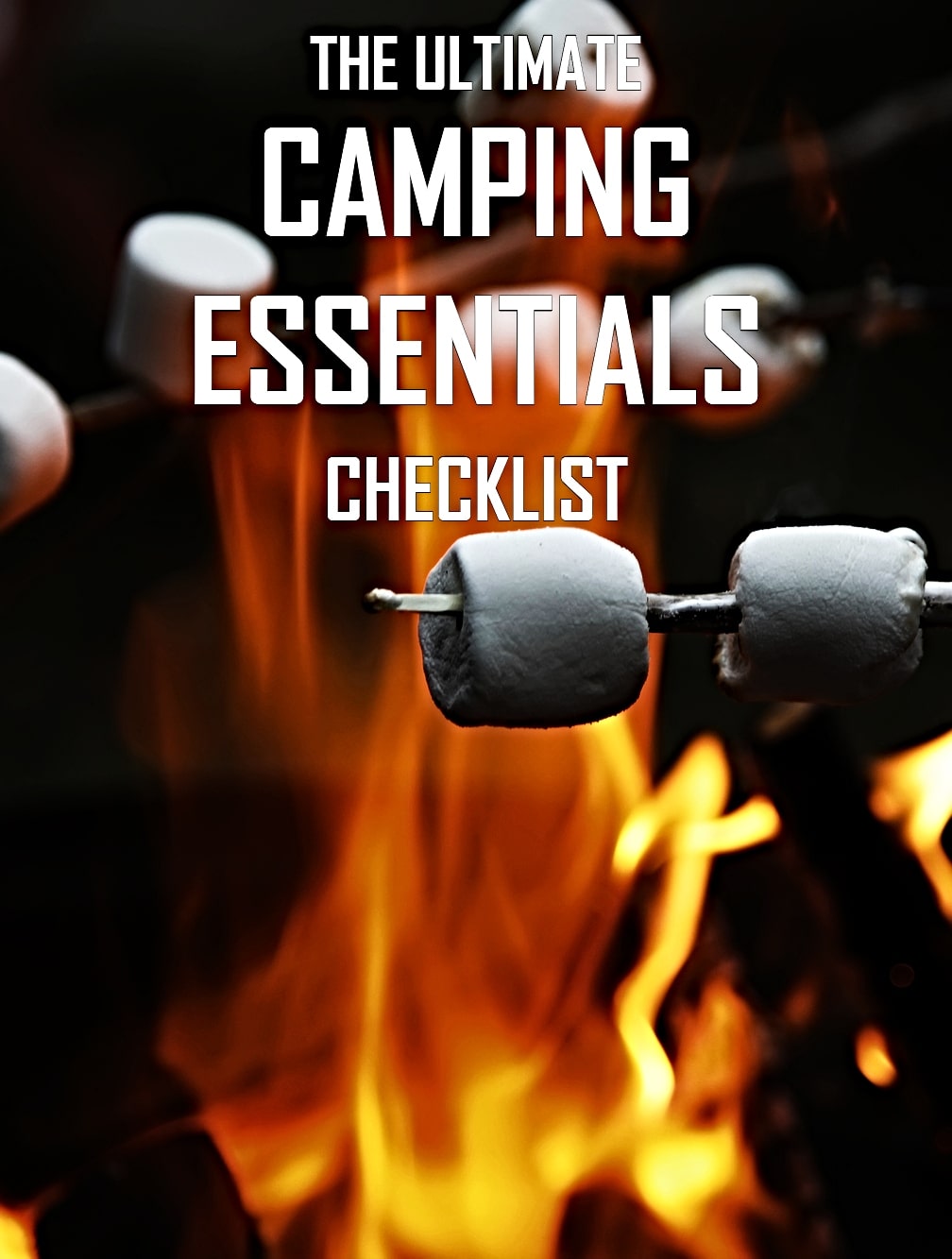
Want a free camping essentials checklist?
Click here to instantly download this Complete Checklist PDF. No purchase necessary.Why You Should Own One
I bought my first one when I was in the Boy Scouts.
I got it at a specialty camp store and carried it everywhere that summer.
It’s often the first cutting tool scouts carry before even a dull pocket knife.
And maybe that’s why I assumed it was a beginner’s tool for so long.
Instead, as an adult, favoring the hatchet or ax, which were more exciting tools for splitting wood.
That’s why, for many years, I skipped carrying a camp saw on my outdoor adventures.
I assumed I could do the same work with an ax or hatchet.
I’ve even tried to use a multi-tool or a serrated survival knife as an impromptu saw in a pinch.
And while I made it work (most of the time), it was never as efficient as using a quality folding saw.
Finally, a few years ago, I rediscovered my original camp saw in the garage at my parent’s house.
It was an exciting find, so I spent time restoring it.
- I started by cleaning and refinishing the wooden handle.
- Then I polished away the surface rust on the blade.
- Lastly, I resharpen all the teeth.
Now, it cuts firewood far better (and weighs less) than my expensive lightweight backpacking hatchet.
Over the past year, I’ve carried my saw on most camping trips.
And I’ve also taken it backpacking, canoeing, and car camping.
I remember how excited I was to buy it all those years ago!
It’s proven itself as the most efficient tool for many camp chores, such as:
- Clearing brush
- Felling downed trees
- Processing firewood
- Survival shelter construction
It’s now such a go-to tool that I can’t believe I ever left it at home!
↓ 10 Bushcraft Saw Skills In 10 Minutes
Best Folding Saw Features To Look For
There are thousands of saws on the market, so choosing a new one isn’t easy.
So many choices can cause analysis paralysis – a situation where it’s hard to settle on the right one for YOU.
And with each saw designed for specific uses, it’s hard to know which will work for you.
Weight
Folding camp saws should be compact and easy to carry, so weight is essential.
But weight is a double-edged sword.
It’s a matter of finding the right balance, the sweet spot.
When pruning trees or clearing brush, it’s often best to have a lightweight saw.
That way, you can operate one-handed, leaving your other hand free to manage branches.
And if you’re working overhead, you want a lightweight saw that won’t tire your arms.
But, a saw that’s too light will feel difficult to control and less precise than a saw with a little more heft.
Besides, a lightweight saw often uses a thinner blade.
These thin blades can produce faster cuts but at the expense of a more flexible blade that’s easier to bend.
Use Case
There are many different types on the market.
And most have different intended uses.
A pruning saw makes clean cuts, but it’s slow to cut thicker logs.
A backpacking folding saw is super lightweight.
But it’s meant for cutting the smallest firewood for small backcountry campfires.
NOT for processing large stacks of traditional campfire wood.
A hunter’s blade saw is used to process meat in the field.
So be sure to understand how you “might” use your saw and buy a saw that makes those tasks the most efficient.
Consider a well-built “general use” foldable saw if you use it in many different scenarios.
Blade Design
The design of a saw’s blade is crucial to determine its capabilities.
The blade design includes several parts, such as blade shape, tooth shape, tooth count, etc.
So let’s go over each…
Blade Shape
A pruning saw that folds generally has a blade with a concave cutting edge.
This shape helps keep the saw in constant contact with the generally round profile of a branch.
By contrast, a metal or drywall hand saw will have a straight profile to work best on the edge of a workpiece.
Finally, there are some folding carpentry saws with a convex blade shape.
This blade shape allows them to cut into flat surfaces, like the middle of a sheet of plywood.
Tooth Shape
Beware, the shape of each tooth also helps determine how a saw will behave.
Teeth with a curved profile will be much more aggressive.
They will dig into the surface fast but require more force per stroke.
The pyramidal teeth of an arborist saw shave away from the sides of the cut, leaving a clean surface.
NOTE: you can tune plain, triangular teeth to cut in many ways, depending on which edge of the tooth is sharp.
Tooth Count
The spacing of the saw teeth, measured in teeth per inch (TPI), is directly related to how smooth and fast the saw cuts.
A blade with a low TPI count is generally more aggressive.
It has larger teeth and larger spaces between the teeth (gullets) to clear lots of wood shavings quickly.
This setup is excellent in a saw for firewood processing.
But it will leave a ragged cut if you try to prune trees in your yard.
A blade with a high TPI count will cut cleanly without splintering and tearing.
But it will do so much more slowly.
Small gullets clog easily with fine shavings.
Cutting alternative materials (such as plastics or soft metals) requires frequent cleaning.
Tooth Set (Kerf Width)
The kerf of a saw is the width of the track it cuts through a material.
Most saw teeth are bent slightly outwards to cut a path a little wider than the blade.
This blade design helps prevent binding and makes the saw more comfortable.
A saw with a wide kerf will be much less likely to bind, but it cuts more material per inch of cut depth.
Push vs. Pull
Some saw blades have teeth that can cut as you push the saw away from your body, while others cut as you pull toward yourself.
Pruning saws feature triangular teeth that cut on both strokes.
This setup allows for a fine-tooth saw that cuts faster than otherwise.
In general, saws that cut on the pull stroke are a little easier to control and are becoming more common.
Safety
A few notable safety features:
Blade Locking Mechanism
The most significant risk is also its primary feature – the folding mechanism.
With most, your hand position when using the saw is in the path of the blade folding mechanism!
So be careful not to touch the blade by accidentally closing it on your hand while in use.
This accident could result in severe injuries or even finger loss!
The best saw locks unfold and snap into position, giving you a physical and audible queue that it’s completely locked.
↓ The Folding Saw: How To Not Cut Your Fingers
That’s why your saw must have a lock to keep the blade in an open position while in use.
Heck, some saws feature a dual lock.
This feature means the blade locks in both the open and closed positions.
This double lock setup helps to ensure there’s zero chance it will open unexpectedly.
High-Quality Blade
The blade design determines function, but the blade quality matters as well.
The steel impacts safety, especially in saws that cut on the push stroke.
An inferior blade can snap if it binds in the cut.
This could leave you pushing your hand forward into a broken metal fragment.
A better-quality blade may still bind depending on the cut, but it won’t snap.
Warranty
As with any tool, quality matters, so look for manufacturers that stand behind their product with a lifetime warranty.
Using the best materials proves they’re more confident in their product quality.
If you buy a saw with a lifetime warranty, register it.
That way, you can get your money back or a replacement saw if you have any issues.
Want a free 54 item survival gear checklist?
Enter your email below to instantly download this Complete Checklist PDF. No purchase necessary. 👇 👇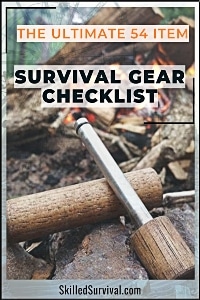
Want a free 54 item survival gear checklist?
Enter your email below to instantly download this Complete Checklist PDF. No purchase necessary. 👇 👇How To Sharpen A Saw
Keeping any saw sharp is the best way to ensure it cuts cleanly and with as little effort as possible.
It’s also a safety issue since a sharp blade will cut with much less force and be more comfortable to control.
There are several steps to sharpening a serrated blade.
And the good news is they’re all relatively simple and easy to perform.
So it’s worth learning how to do it right.
Because if you know how to sharpen one properly, it will keep your saw working smoothly for years.
You’ll need a small diamond or triangle saw file that fits the shape of your saw teeth.
Check with the manufacturer or head to a local home and
The general steps are:
- Disassemble your saw and remove the blade.
- Clean the blade of any dirt, sawdust, and tree sap. For most of it, you can use a stiff wire brush with soapy water. But a solvent like kerosene or isopropyl alcohol will help with stubborn sap stains. Be sure to clean out the gullets between the saw teeth.
- Working down the blade, file each tooth, and keep track of how many strokes you use on each tooth. You’ll need to do more work on a dull saw than on one you regularly tune.
- Next, check that all the teeth are the same length. The teeth left longest will do most of the work for future cutting. Thus, preventing the neighbor’s teeth from engaging with the surface.
- Check for bent teeth. Many saws are intentionally bent slightly outward to increase the kerf width. However, use and poor handling can bend them further out of line and make them hard to maintain. If a tooth sticks too far outside the normal, you’ll want to bend them back in line with the rest.
This video details the sharpening process for a Silky pruning saw:
↓ How To Sharpen A Saw
Paying attention to the form and body mechanics helps ensure a good result.
Final Thoughts
While you’ve likely been using a knife and ax for years, it’s time to reconsider carrying one.
They’ve come a long way, and the saws on the market now make an excellent tool for everyone.
They allow you an efficient way to prune trees or butcher wild game.
The folding saw market is vast, and you get what you pay for.
Be sure to buy from a reputable brand. Look for a lifetime warranty.
That way, you can take up any issues with the manufacturer rather than depend on a store warranty.

Prepare, Adapt & Overcome,
P.s. - I just found out 2 out of 3 Americans don’t feel prepared for a 3 day disaster!!!
I guess this goes to show how modern society continues to embrace ‘living a fragile life.’ What’s crazy is… it’s so easy to fix.
To make sure YOU have the basics, watch our FREE training on “10 Simple Steps To Basic Preparedness” that shows you HOW.
Nothing crazy here… this isn’t doomsday prepping... just the basics every responsible adult should have before a disaster strikes.Why You Can Trust Skilled Survival...
Go here now to review a full breakdown of:
- Who We Are
- Our Credentials
- Our Mission
- & Product Recommendations...
Here are a few highlights of our teams credentials & certifications:
- Certified Member of a Mountain Search & Rescue Organization
- Plant Emergency & Safety Leader for a Major Food Manufacturer
- Member of the 10TH Mountain Division Hut Association
- Certifications: Avalanche 1, WFR, CPR
- Official Gear Tester for Numerous Outdoor Gear Companies
- Countless Multiday Backpacking trips into Remote Wilderness
- Bachelor's Degree In Mechanical Engineering
- Bachelor's Degree In Civil Engineering
- Bachelor's Degree In Biomedical Engineering
"It takes 20 years to build a reputation and five minutes to ruin it." - Warren Buffett
We're fully aware that trust is NOT something you GET but is EARNED.
And we'll continue to earn YOUR trust through our forthright and honest approach with each new Blog Post, Guide & Product we create...
P.s - I just took this FREE 60-second 'Readiness Score Quiz'👇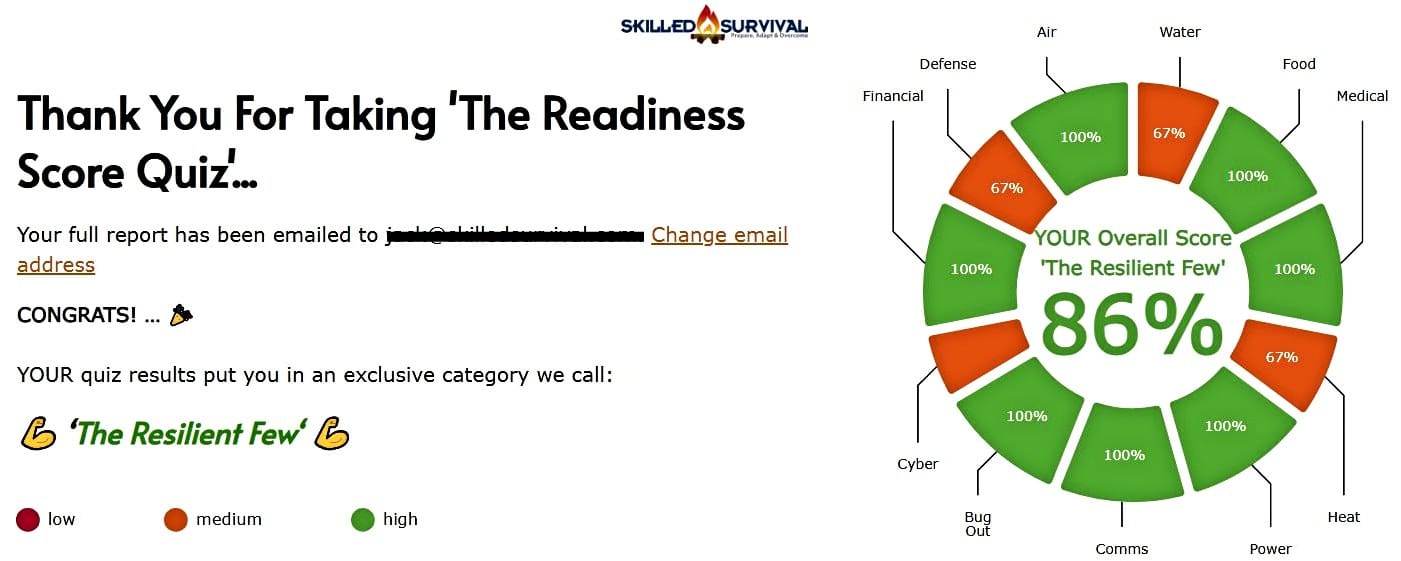
AND... I've still got a few gaps in my preps...🤔 But at least, I'm not part of 'The Fragile Masses'. 👍 Find out where YOU stand by answering a few questions...
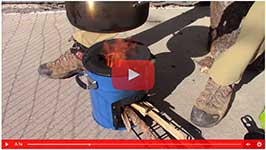
Recommended Reading
Cell Phone Booster: Is It Worth Getting One?
Dealing with weak cell signal? You need a cell phone booster and we'll show you the best ones to buy to solve your problem once and for all.
Best Walkie Talkie Chosen By Mountain Rescue Expert
Best walkie-talkie 1. Rockie Talkie 2. Backcountry Access 3. Midland LXT600VP3 4. BaoFeng UV-82 HP 5. Midland GXT1000VP4 6. Motorola RMU2080D
Best Tactical Boots To Tackle The Most Brutal Terrain
Not all boots are created equal and if you want the best, you have to go tactical. We review the best tactical boots on the market today.
Best Tactical Belts (& Setups) For Extreme Combat
The best tactical belts are innovative, versatile, durable and 100% worth wearing! In this guide, we review the best ones on the market to make your search easy.
Best Headlamp Experts Trust For Hunting, Hiking & Survival
Not all illumination is created equal, some options are great, but many are a waste. I show you the best headlamp and key features.
Best Tactical Gloves For The Most Unforgiving Tasks
Not all gloves are created equal. A few are excellent, while many are rubbish. We show you the best tactical gloves and features to look for.










